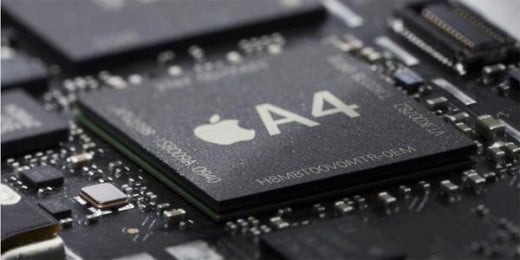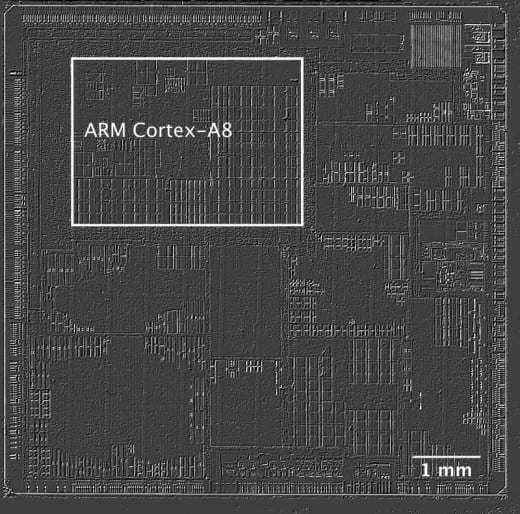Mobile Device Processors
Mobile Device Processors
Like the heart of any laptop, notebook, netbook, tablet, or desktop computer, cellular phones, particularly smart-phones have to have a computer processor built into them to function properly.
After all, a smart-phone is nothing more than a hand-held computer that happens to also make telephone calls.
ARM
In order for this article to make sense I have to first touch on what ARM is and even explain what the "R" in ARM means. I'll start with the "R" first.
Reduced instruction set computing, is a Central Processing Unit (CPU) design based on the idea that "simplified instructions can provide higher performance." If that simplification can provide faster execution for each instruction then a speed benefit is sure to follow. There are other benefits as well. RISC computers use less power and run cooler.
A computer using this concept is called a Reduced Instruction Set Computer or RISC. When used in the term ARM (below) the R stands for RISC.
ARM
Over the years improvements have been made with this basic RISC concept and now machines that run processors designed on this idea are called Advanced RISC Machines or ARMs. There are quite a few ARMs out there, all made by different manufacturers, but the common goal is to create and provide a very small computer chip that has (nearly) everything on it, runs fast, uses less power, doesn't generate heat, but still performs very much like the processor on a larger computer.
This article will cover five system on a chip (SoC) processors that use this concept in their fabrication and use.


Apple A4
This is the processor that powers the iPad, iPhone4, iPod Touch, and the latest version of the Apple TV.
It is Advanced RISC Machine (ARM) processor made for Apple by Samsung. The A4 is designed, and indeed runs, at 1GHz (GigaHertz) which is almost as fast as many older home desktop computers. It is also a System on a Chip (SoC) processor with CPU (Central Processing Unit), low-power RAM (Random Access Memory) in a Package-on-a-package configuration (PoP), GPU (Graphics Processing Unit), an internal bus (data pathways) that supports sixty-four (64) bit wide data bus.
The A4 for the iPod, iPod Touch, and Apple TV all support PoP two hundred fifty-six (256Mb) million bytes of RAM; the iPhone supports PoP RAM of five hundred twelve (512Mb) million bytes of RAM. This provides ample space for internal processing.
For similar specifications look at the Samsung Hummingbird below.
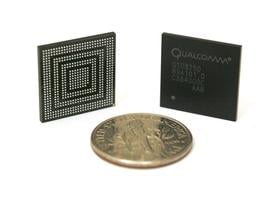
Qualcomm Snapdragon
The Snapdragon is the processor that is installed and used by Acer, ASUS, Dell, HP, HTC, Lenovo, LG, and Samsung.
The reason is pretty simple; Snapdragon will run Microsoft Windows Mobile, Android, and a number of Linux-based operating systems.
Snapdragon was designed from the start to support strong computing power, multimedia (including high-definition [720p/1080p}), and built in GPS (Global Positioning System). As with the A4 (above) the Snapdragon was also designed to consume less power and endure long operation on battery power alone. Because of it's size the Snapdragon easily fits in hand-held devices.
Because Snapdragon was targeted to mobile computing from the beginning it also supports cellular broadband, Wi-Fi, BlueTooth, mobile TV and high definition video recording (not just playback)
The Snapdragon processor runs at one GigaHertz (1GHz).
System on a Chip Releases
Snapdragon SoC's have been released since 2008 starting with the QSD8650 and the QSD8250. The QSD8250 was used in the Google Nexus 1 in January 2010. The QSD8650 was introduced in the HTC EVO 4G in June 2010 and the MSM8255 introduced in the HTC Desire HD in October 2010.
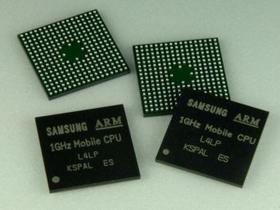
Samsung Hummingbird
Samsung Electronics Co. and Intrinsity Inc. have created the Hummingbird processor. Like the two above they are SoCs running at 1GHz.
The Hummingbird was first introduced on the Samsung Galaxy S. It has since appeared in a long line of Samsung smart-phones including the Captivate, Vibrant, Epic 4G, Fascinate, Showcase, Mesmerize, and Continuum.
As with all other SoCs discussed here the Hummingbird is small, fast, uses less power, and runs cooler than larger processors.
Rather than repeat all of the specifications the Hummingbird has virtually identical specifications to Apple's A4 above.
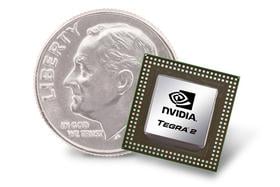
NVIDIA Tegra 2
The Tegra 2 features a dual-core CPU within claims ten times the performance of the average smartphone SoC while consuming 500-mW of power. This makes the Tegra2 one of the lowest power consumption SoCs. The Tegra 2 was presented at the Consumer Electronics Show and was featured in product announcements for Motorola Xoom, LG G-Slate, Dell Streak 7, Notion Ink Adam, Asus tablets, and an as yet unnamed Toshiba tablet computer.
The Tegra 2 is a follow-on to the Tegra 1.
Because nVidia is long known as a Graphics Processor Unit company the Tegra 2 integrates the GeForce GPU into it's core design; nVidia claims the fastest video processing of any SoC maker out there.
The Tegra 2 is designed to support assisted GPS, high-definition video (at 720p/1080p), and up to twelve (12Mpxl) Megapixel still photo.
To date nVidia claims a potential installed base of up to fifty (50) different devices.
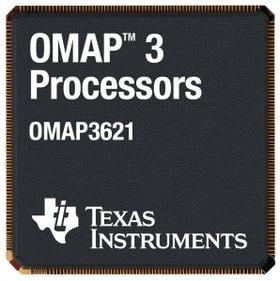
Texas Instruments OMAP
Texas Instruments has also introduced a lower power ARM processor called the Open Multimedia Application Platform (OMAP).
OMAP 1 was introduced in March 2009 and quickly found its place in the Nokia 770 series tables. This is a single-core processor.
OMAP 2 was marketed only to hand-set vendors including Fujitsu F1100 smart-phone. This is a single-core processor.
OMAP 3 is used in the Motorola Droid, Palm Pre, Nokia N900, Motorola Defy & Droid 2 and the HTC Hero. The OMAP three supports assisted GPS, high-definition video (720p/1080p), and up to 12Megapixel still image recording.
OMAP 4 is the latest iteration of TI SoCs. It is a dual-core processor and is used in the Pandaboard and Blackberry Playbook. The OMAP 4 claims clock rates of 1 and 1.5 GHz making it the fastest listed SoC of all those reviewed here.
As with other SoCs the OMAP 4 is lower power, runs cooler, supports graphics (including 3D), and is designed to conserve battery life.
A Word About Processor Speed and Device Performance
Manufacturers love to claim high processing speeds and to date, none of them exaggerate these figures. But there are still problems and they do not rest with the SoC vendors.
Sloppy Coding
The most efficiently designed, lower power, high speed processor can quickly become a an anchor around your neck if the software that runs on it is inefficient, bug-ridden, or simply not optimized for maximum performance.
Operating Systems Lag Behind SoCs
The nature of hardware and software is that one always comes out before the other. A faster processor is great, but if the operating system vendors don't have advanced knowledge about the SoC (and they usually don't) the operating systems they write cannot take full advantage of the processor design. This has almost always been the case too.
So whether your mobile device is running Android 2.3, Blackberry OS6, Windows Mobile 7, or any other cutting-edge operating system, none, to date, were designed for these dual core processors covered above.
That will come in six months to a year depending on the mobile device vendor's development teams.
Coda
With five competing devices made by four manufacturers we are once again seeing fierce competition in the mobile computing market.
This is a good thing.
But I caution the reader not to make purchases solely on the SoC's performance alone. There are a lot of other factors to a great mobile computing experience. The processor in the hand-set is only one of them.
Disclaimer
The author was not compensated in any way, monetarily, with discounts, or freebies by any of the companies mentioned.
Though the author does make a small profit for the word count of this article none of that comes directly from the manufacturers mentioned. The author also stands to make a small profit from advertising attached to this article.
The author has no control over either the advertising or the contents of those ads.

